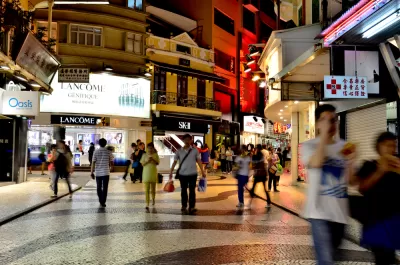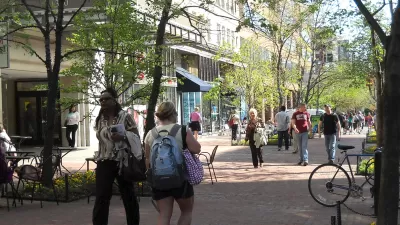Cities are putting together the pieces of walkability, but there's still work to be done in completing the puzzle.

Laura Laker writes a feature story on how cities are making their cities more walkable, and why:
The modern obsession with autonomous and electric vehicles, dockless scooters and bicycles means it is easy to forget the humble pedestrian. However, as almost every journey starts or finishes on foot, we are ignoring a fundamental part of what makes a city great.
To gather the evidence for the story, Laker surveys representatives from organizations like the UK walking charity Living Streets, the design and planning company Arup, and the National Association of City Transportation Officials (Nacto).
The article goes into detail on case studies from Auckland, London, Manchester, Hanoi, Denver, Addis Ababa, and San Francisco. One particularly compelling anecdote from these case studies:
Notoriously car-centric Auckland in New Zealand recently published a report showing pedestrians as the most economically important transport mode in the city. They estimated that policies which put people off walking on Queen Street, a major shopping area, cost NZ$11.7m (£5.9m) a year.
While there are many examples of cities working hard to improve safety for pedestrians, and from numerous approaches the many risks facing pedestrians, Laker makes one thing abundantly clear: there's still along way to go and cities will require a lot of strong leadership to make dreams of a truly walkable city come true.
FULL STORY: What would a truly walkable city look like?

Alabama: Trump Terminates Settlements for Black Communities Harmed By Raw Sewage
Trump deemed the landmark civil rights agreement “illegal DEI and environmental justice policy.”

Planetizen Federal Action Tracker
A weekly monitor of how Trump’s orders and actions are impacting planners and planning in America.

The 120 Year Old Tiny Home Villages That Sheltered San Francisco’s Earthquake Refugees
More than a century ago, San Francisco mobilized to house thousands of residents displaced by the 1906 earthquake. Could their strategy offer a model for the present?

In Both Crashes and Crime, Public Transportation is Far Safer than Driving
Contrary to popular assumptions, public transportation has far lower crash and crime rates than automobile travel. For safer communities, improve and encourage transit travel.

Report: Zoning Reforms Should Complement Nashville’s Ambitious Transit Plan
Without reform, restrictive zoning codes will limit the impact of the city’s planned transit expansion and could exclude some of the residents who depend on transit the most.

Judge Orders Release of Frozen IRA, IIJA Funding
The decision is a victory for environmental groups who charged that freezing funds for critical infrastructure and disaster response programs caused “real and irreparable harm” to communities.
Urban Design for Planners 1: Software Tools
This six-course series explores essential urban design concepts using open source software and equips planners with the tools they need to participate fully in the urban design process.
Planning for Universal Design
Learn the tools for implementing Universal Design in planning regulations.
Clanton & Associates, Inc.
Jessamine County Fiscal Court
Institute for Housing and Urban Development Studies (IHS)
City of Grandview
Harvard GSD Executive Education
Toledo-Lucas County Plan Commissions
Salt Lake City
NYU Wagner Graduate School of Public Service





























